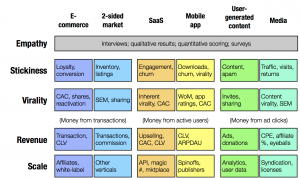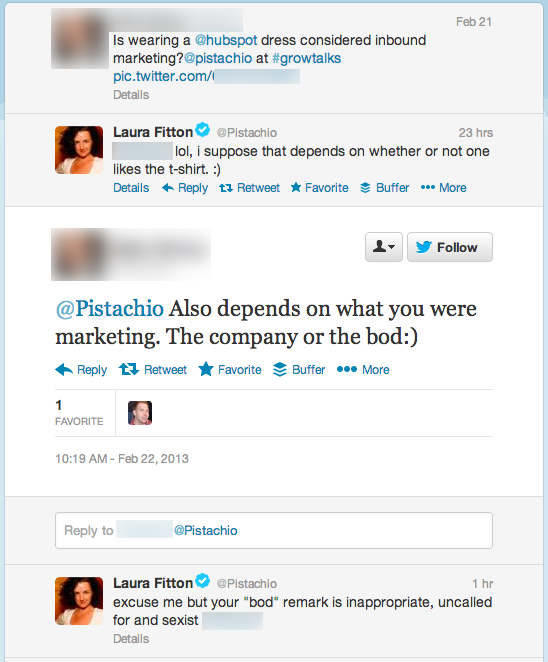Editor’s Note: This article was written by Danny Robinson and Boris Mann. Danny is a founder of Perch and long-time entrepreneur who has built companies on both sides of the border. Boris Mann is a managing director at Full Stack, a napkin capital investment firm in Vancouver. Both Danny and Boris are investors in Contractually .

![]()
![]() Some rights reserved by Orin Zebest
Some rights reserved by Orin Zebest
One of the great things about the tech industry is the generousity of people, who have ‘been there and done that’, to share their time with entrepreneurs. The energy of sharing, connecting, approachability and equality makes startups so attractive.
Lately, there is an increased demand for attention and engagement of advisors and mentors. And, in speaking with other advisors in the community, there is a feeling that some entrepreneurs are exploiting the system and taking advantage of the good will of others. It’s not necessarily intentional or deliberate. Entrepreneurs are trying to get meaningful advice to maximize the outcomes of their companies for the least cost.
There are increasing demands on advisors, and it is partially the role of the advisor to manage their workload and volunteer time. But it is also the responsibility of entrepreneurs to understand the circumstances of when to ask someone to join your advisory board and when not to.
A Quick Guide to Recruiting Advisors
When a founder feels like he/she could use advice from someone experienced in a certain area. Whether it’s getting go to market strategy, product design, fund raising, corporate structure, making introductions, or simply adding credibility to the company (though don’t overplay the advisory board when raising capital – see Mark Suster’s post). Getting an advisor to help you out with skills that you don’t have inside the company is a great way to move forward.
- One of your early “asks” to anyone you meet is to help introduce you to a potential advisor
- 1 – 3 official advisors is a good number to aim for initially
Finding an Advisor
It is the responsibility of a founder to source and reaches out to an advisor and asks to meet. There is no obligation for anyone to become an advisor. This is like a dating process. The goal is to build a relationship over time, where there is value for both the advisor and the founder in the role.
- Leverage your existing personal and professional networks to connect with individuals that have shared interests
- Use LinkedIn and Clarity.fm to identify and connect with potential advisors.
- Attending local events, joining an incubator, and working at co-working spaces are additional ways to get introduced to potential advisors
Advisor Expectations
As an advisor:
- You meet for coffee, get on the phone, and get to know the entrepreneur and how you can help. Maybe your personal skill set isn’t relevant, but you know someone else that would be a great advisor / investor / customer / channel / whatever.
- You don’t expect compensation up front, you don’t lead with paid consulting offers (this is a huge red flag)
- You show you can be helpful first in moving the startup forward.
There is no obligation to engage with a startup. You should not expect compensation and you should always create more value than you extract.
Standard Advisory Board Terms
But back on the founder side, here’s where it seems there is a bit of a problem in Canada: no follow through.
After accepting and otherwise being happy with the advisor’s help, you should reward them with an offer to officially join the advisory board.
Our guidelines for standard advisory terms are as follows:
- 0.1% – 2% depending on the level of advisor.
- The level depending on the advisors’ stature in the community, but also their level of involvement. 0.5% is a good level to think about starting from, and 2% is extremely rare unless the advisor is directly helping close customer deals or raise money.
- Do not offer cash.
- It’s extremely rare that there would be a cash component. If cash is requested from the advisor, walk away, and look for a more sophisticated advisor. For further clairty, if the advisor will be in putting multiple hours per week, they’re not an advisor, they’re a contractor, in which case, cash compensation may be appropriate (see Brad Feld’s Compensation for [Advisory] Board Members).
- Options vest monthly over 2 year period.
- Either can terminate upon 30 days written notice.
- For pre Series A companies, the strike price is set to about 10%-20% that of the last round of financing, or pre-financed companies, the strike price should be about 10% of the estimated value of the company.
- Advisor agrees to one phone call or in-person meeting per quarter.
- But no need to dwell on the terms of what they will do for you. Your initial meeting should be representative of what you will get in return, so pay no attention to getting specific on the details here. If it’s not working out, you can both get out of the deal anytime.
- Generally, you should expect your advisor to follow up on your meeting with thoughts and links and verify that he/she will make the introductions promissed and in general do what they said they would.
Assuming the advisor accepts, entering into an agreement like this will explicitly link your success to theirs, and add their credibility to yours. Vesting them in your company’s success spreads out your champions, and creates more winners for the community at large.
As a startup founder, you’re going on a long arduous journey and you’re going to need a lot of help along the way. Building a strong set of advisors will be one of your first “asks”. These are people that can complement your skillset and fill gaps on your team, and add credibility (sometimes called social proof or traction), especially for first time founders.
If anyone has helped you in a meaningful way, and you have simply not known the proper etiquette, I encourage you to retroactively offer up advisory board options. Let’s make sure that us friendly Canadians are known for our official follow through, as well as our friendliness.
We’ve worked with Contractually to host an Advisory Agreement template that we’ve used for years.
You can sign up for Contractually [Ed. note: Both Boris and Danny are investors in Contracutally] and use it directly with their free plan, or be old-school [Ed. note: at StartupNorth we prefer old skool] and use it manually.
Thanks to Fasken Martineau for making this template available.











